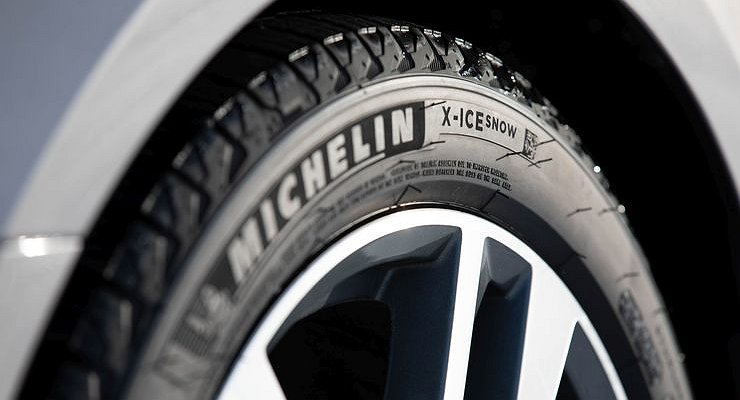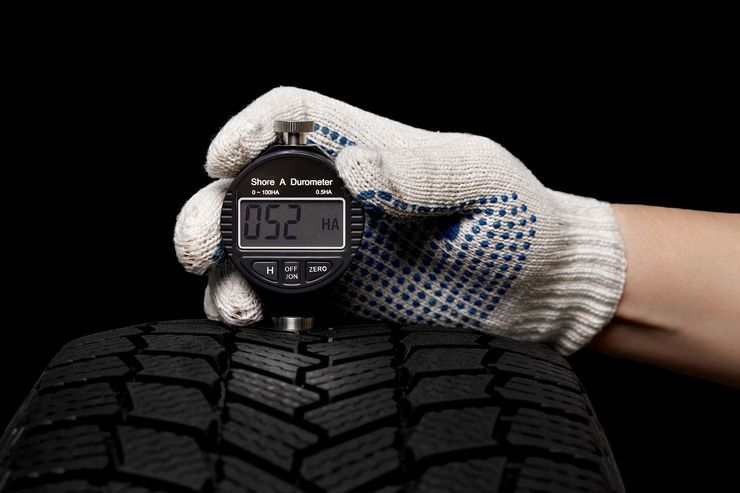Tire choice is a hot topic as it’s autumn in the yard. Many drivers tackle this problem thoroughly, because a lot depends on the ‘shoes’ of the car. Usually buyers are interested in the size and release date, but there are other – critical – characteristics of tires that few people know about. The AvtoVzglyad portal tells in detail about such specifications.
Let’s start with “Shore Hardness”. As the name implies, this is one of the methods of measuring the hardness of materials. If you do not trust the manufacturer, who indicates the data on the product label or the tests of printed publications, you can use a device called a dumometer.
For example, Nokian Hakkapeliitta 9 has this indicator equal to 54 units. That is, the tire is soft. And the Chinese Sailun Ice Blazer WST3 with a hardness of 71 units is tough. Translate into human language: soft, ie elastic, the model brakes better on asphalt and on ice. A hard one will be stronger. She will endure high speed “grip” on the primer, gravel and side cuts are not so terrible here. Therefore, it makes sense to choose such tires for drivers who often drive on bad roads in winter.
Weight is another indicator that almost no one cares about. And it is not marked on the sidewall of the tire. But it depends on the length of braking distance and fuel consumption.
Mass is influenced by many characteristics. Let’s say the width and height of the profile. For example, a low profile 205/40R17 weighs half the weight of a 255/70 R15. And let’s not forget about the density of the rubber compound and the presence of a reinforced carcass. In general, the heavier the shoes, the greater the unsprung mass of the car. Which in turn affects the life of suspension parts.
Finally, many believe that if the tires are symmetrical and non-directional, they can be placed on any axis and in any order. In fact, the profile can not be perfect – there is always a slight curvature of the frame. This creates a lateral force. It’s small, just a few Newtons. But if you put tires with the same traction on the front axle, the car pulls to the side. But the “shoes” with different shots compensate each other, and the car goes straight.
For example, the Russian factory Continental is working on such a marking in the direction of the cone effect (by the way, it continues to work). The CrossContact LX2 tires produced here have a similar marking. And they can also be found on some Chinese crossovers.
Let’s start with “Shore Hardness”. As the name implies, this is one of the methods of measuring the hardness of materials. If you do not trust the manufacturer, who indicates the data on the product label or the tests of printed publications, you can use a device called a dumometer.
For example, Nokian Hakkapeliitta 9 has this indicator equal to 54 units. That is, the tire is soft. And the Chinese Sailun Ice Blazer WST3 with a hardness of 71 units is tough. Translate into human language: soft, ie elastic, the model brakes better on asphalt and on ice. A hard one will be stronger. She will endure high speed “grip” on the primer, gravel and side cuts are not so terrible here. Therefore, it makes sense to choose such tires for drivers who often drive on bad roads in winter.
Weight is another indicator that almost no one cares about. And it is not marked on the sidewall of the tire. But it depends on the length of braking distance and fuel consumption.
Mass is influenced by many characteristics. Let’s say the width and height of the profile. For example, a low profile 205/40R17 weighs half the weight of a 255/70 R15. And let’s not forget about the density of the rubber compound and the presence of a reinforced carcass. In general, the heavier the shoes, the greater the unsprung mass of the car. Which in turn affects the life of suspension parts.
Finally, many are confident that if the tires are symmetrical and non-directional, they can be placed on any axis and in any order. In fact, the profile can not be perfect – there is always a slight curvature of the frame. This creates a lateral force. It’s small, just a few Newtons. But if you put tires with the same traction on the front axle, the car pulls to the side. But the “shoes” with different shots compensate each other, and the car goes straight.
For example, the Russian factory Continental is working on such a marking in the direction of the cone effect (by the way, it continues to work). The CrossContact LX2 tires produced here have a similar marking. And they can also be found on some Chinese crossovers.
Source: Avto Vzglyad
I’m Sandra Torres, a passionate journalist and content creator. My specialty lies in covering the latest gadgets, trends and tech news for Div Bracket. With over 5 years of experience as a professional writer, I have built up an impressive portfolio of published works that showcase my expertise in this field.














